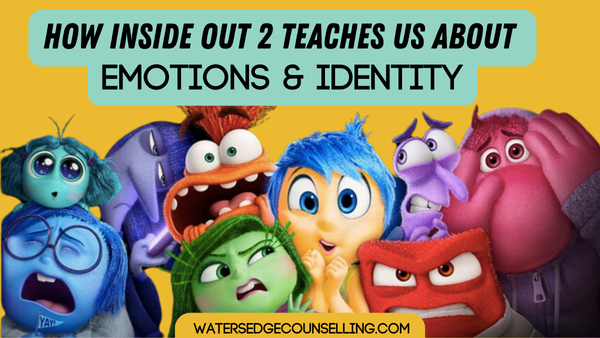
Over the last school holidays, Disney Pixar’s Inside Out 2 was released – and kids went wild over it. Who are we kidding, adults did too. It tells the story of a now teenaged Riley, and how her emotions (all characters, of course) navigate life inside her Brain Centre.
But, plot twist, Riley has just entered puberty and that means BIG changes are taking place. We’re talking complete demolition of Riley’s internal world, as she (and her emotions) try to figure out who she is, what she values, and how she is feeling.

There’s a good chance you’ve already seen Inside Out 2. After all, it has become the highest grossing animated movie ever. But we can’t miss this chance to talk about the characters and how they shape our kids!
We frequently bring out the character icons of Joy, Sadness, Jealousy, Anger and Fear in our kid’s therapy sessions, because young people relate to them. It gives them the words and comprehension to understand WHAT they are feeling, and eventually, to understand WHY they are feeling that way.
So, with Riley hutting puberty and a handful of new Emotions taking up residence in her brain, we thought it was time for a role call. Here are all the Emotions our kids are learning about through Inside Out 2, plus some ways you can use them to teach Emotional Literacy to your own kids. Come back next week for five more!
Joy
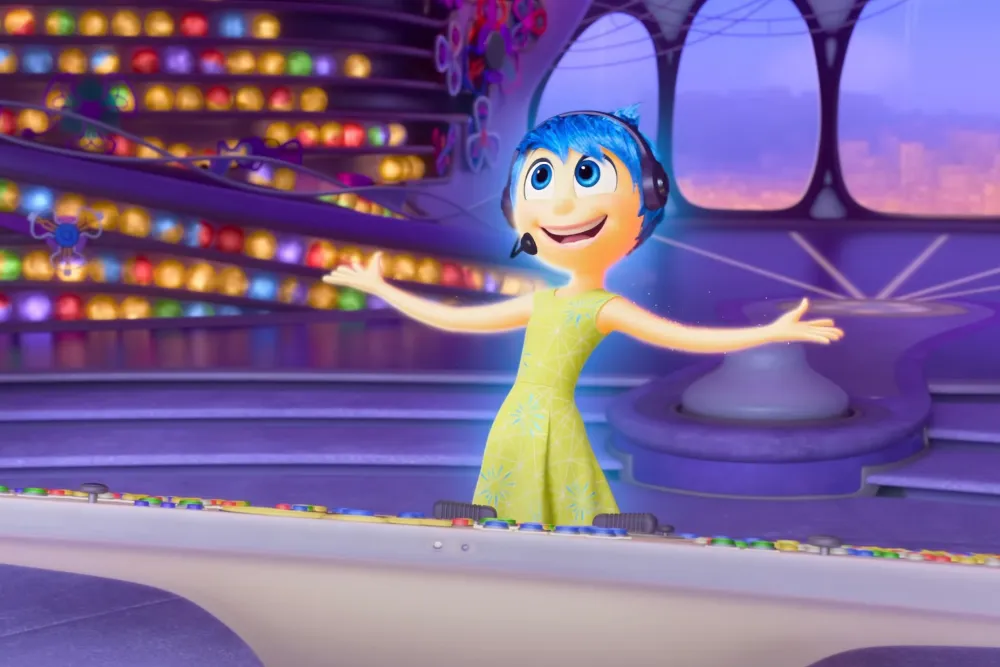
This bubbly, optimistic character was Riley’s primary Emotion and lead the way as she grew up. After the first film, Joy learned the importance of integrating our feelings (we’re still not over how she and Sadness became besties).
In the sequel, she is still determined to give Riley the best most joy-filled life ever. However, when the emergency button of Puberty goes off, she loses control and assumed the new Emotions are there to sabotage Riley. Joy teaches Riley that hope, whimsy and being goofy are all important parts of our identity, even as we grow up. She is extra powerful, when she understands Anxiety and works with her to make Riley’s teenage years better.
Anxiety
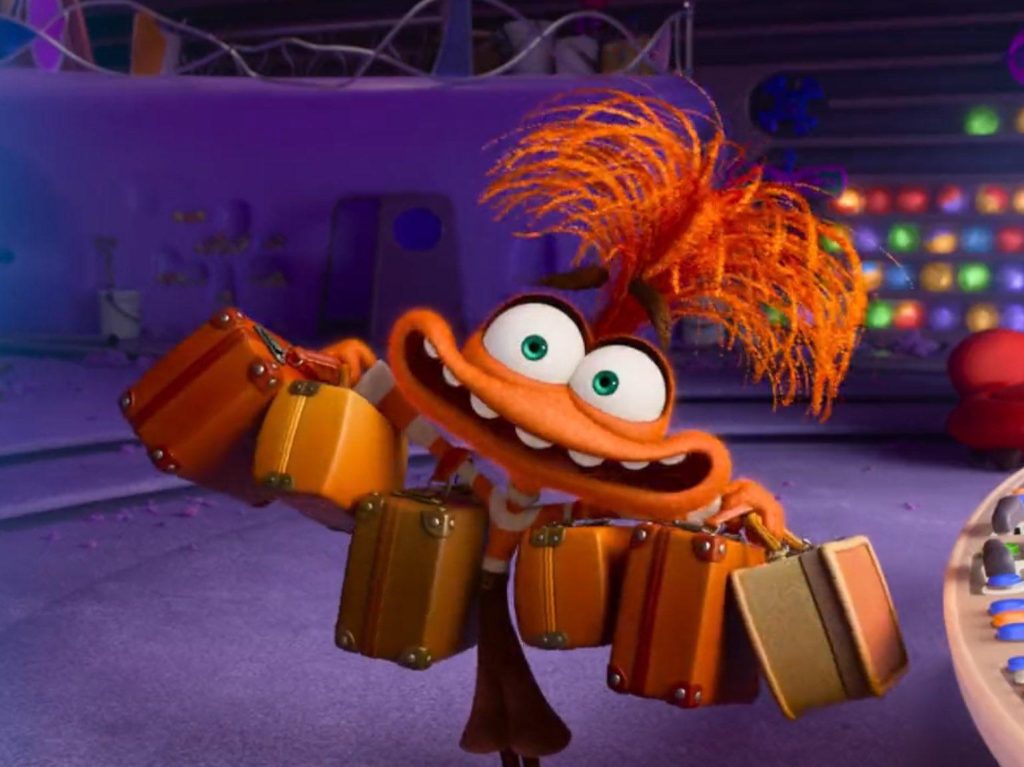
Say hello to the newest member of Riley’s brain! Anxiety is always in fight or flight and is determined to predict every possible outcome of Riley’s life. By doing this, she makes sure Riley can avoid the worst-case scenario (shame, embarrassment, not being ‘cool’).
Anxiety is an expert on puberty, but she does like to micromanage Riley, and demands total control over her emotions. When they rebel (or Riley feels an emotion she can’t understand or control), Anxiety suppresses them and throws Riley into a full throttle panic attack. Anxiety needs the support of the other emotions to feel safe, secure, and to create order for Riley.
Sadness
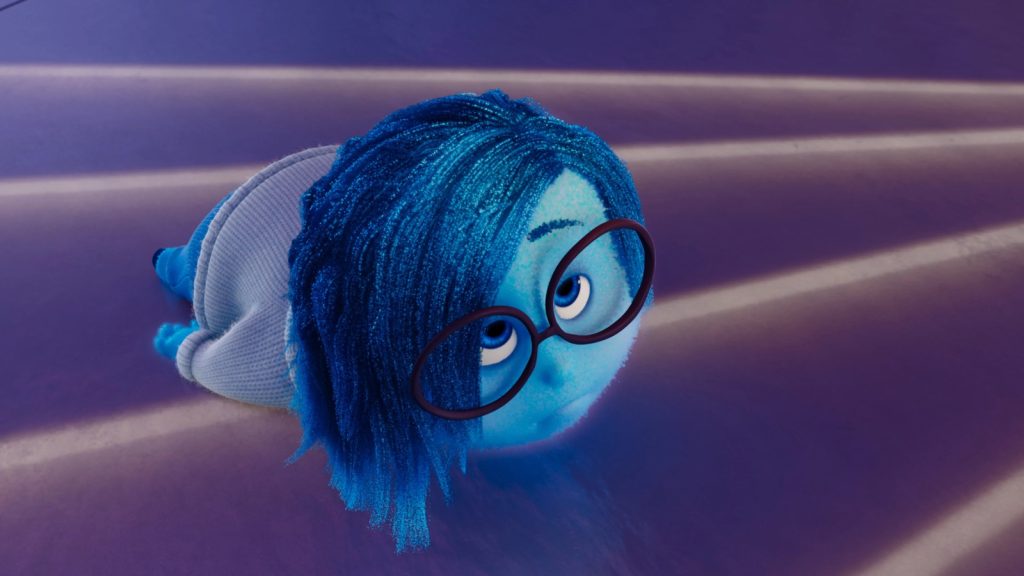
She’s sad, she’s blue, and she’s back! This wet cloud of a character still navigates low self esteem in the meta universe, but has found her true calling is in helping Riley to feel and process all her emotions, no matter how sad or painful they may be.
If Sadness was in control, she would lead Riley into depression. However, when she is happily accepted as part of the team, she works with Embarrassment to process and understand the complexity of ALL Riley’s feelings, making sure that Joy, Anger, Fear and Jealousy get back to the Brain Centre so our hero can redefine her true sense of self.
Anger
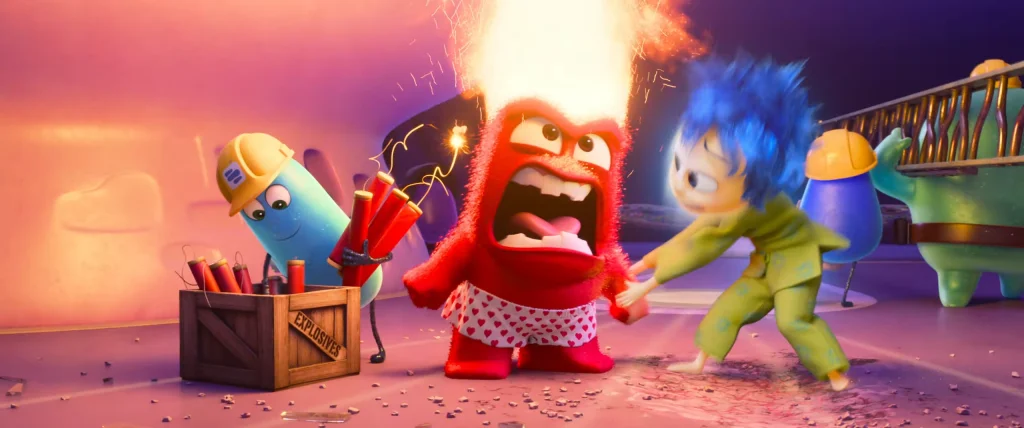
This hot-headed Emotion is known to flare up on a whim, and relies on the support of the other emotions to regulate. Once Riley hits puberty and he is ostracised to the dungeon of Riley’s brain, we see that his super power IS his big feelings.
He is angry and rightfully indignant and annoyed that Riley’s sense of self is falling apart. Anger plays a crucial role in energising the team to make the trip back to the Brain Centre, and through this we see that Riley values doing what’s right and a sense of justice.
Embarrassment
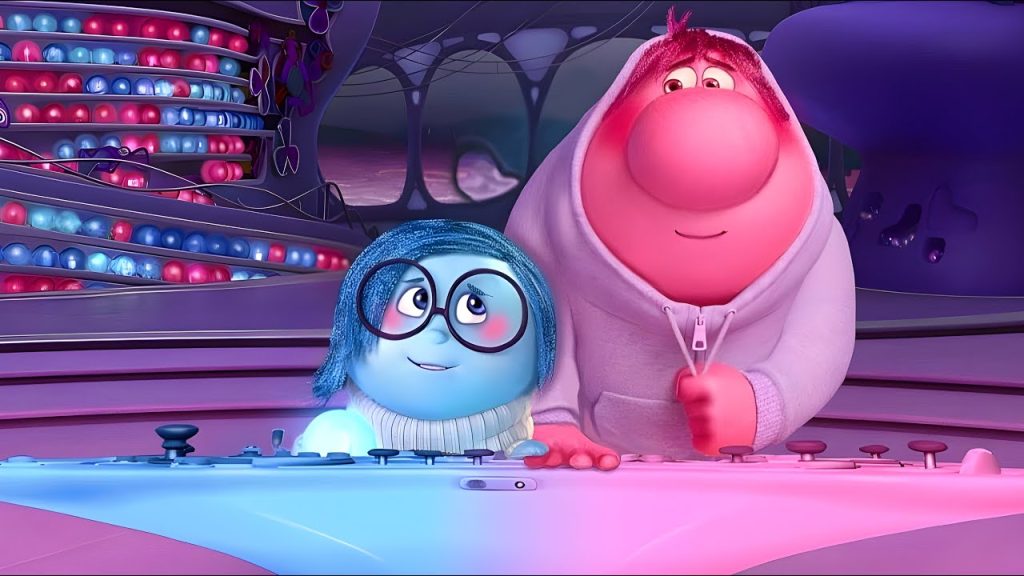
This big pink guy is the silent and is always present as an emotion during Puberty. A new member of the team, he is uncomfortable in his own skin and hides in his hoodie most of the time. Initially, Embarrassment doesn’t seem to understand his role. He dislikes himself and thinks he is hurting Riley. But we soon realise he cares a lot for Riley, and steps in to help her process uncomfortable or shameful circumstances.
When Embarrassment and Sadness work together, they are a power duo. They know that for Riley to have a healthy sense of self, she needs to feel uncomfortable feelings, process the consequences of her actions, and figure out why she responds that way.
Want to know more about Inside Out 2 characters? Read Part 2 here.